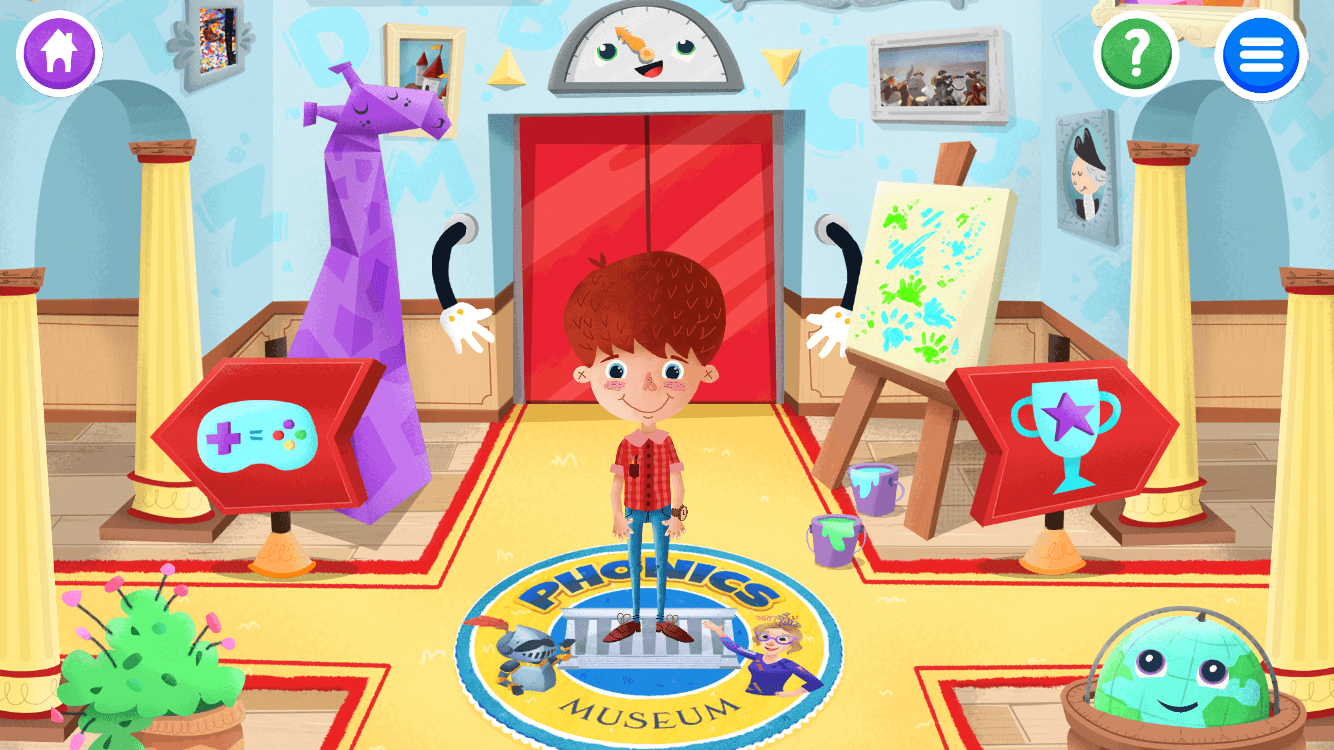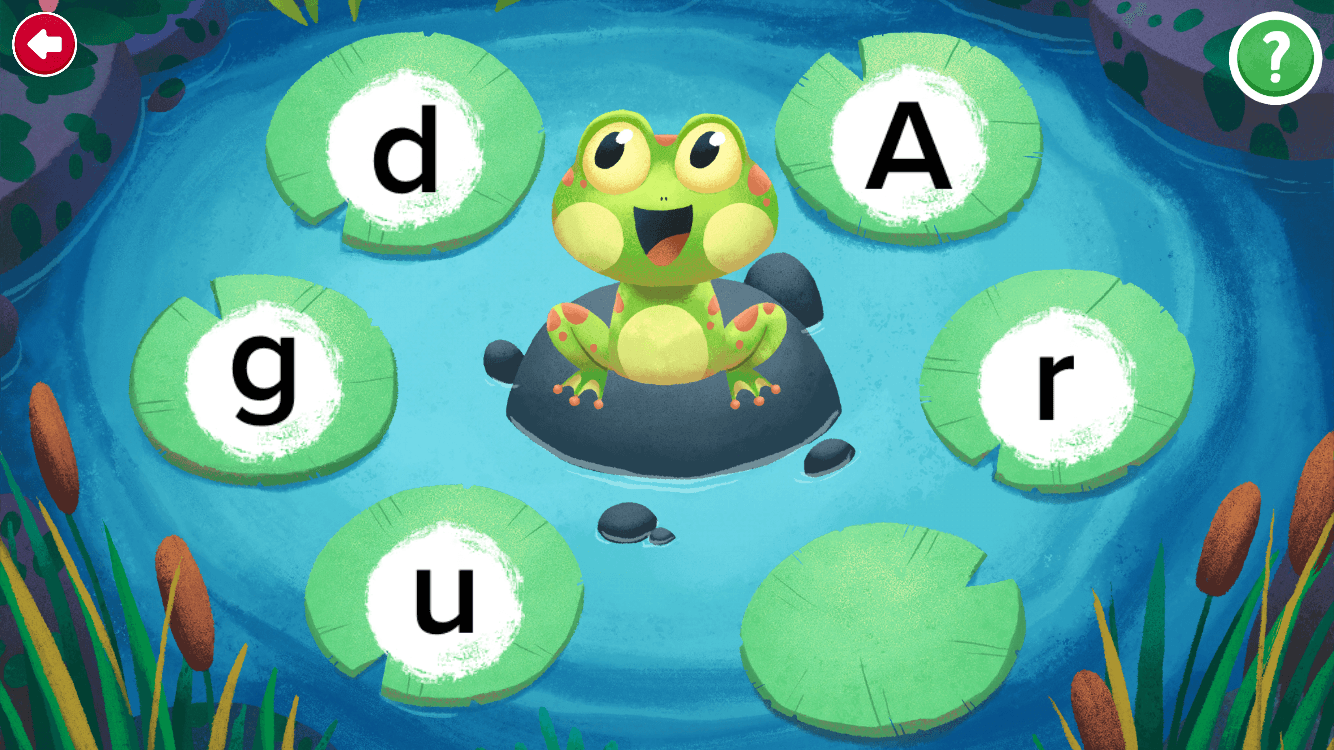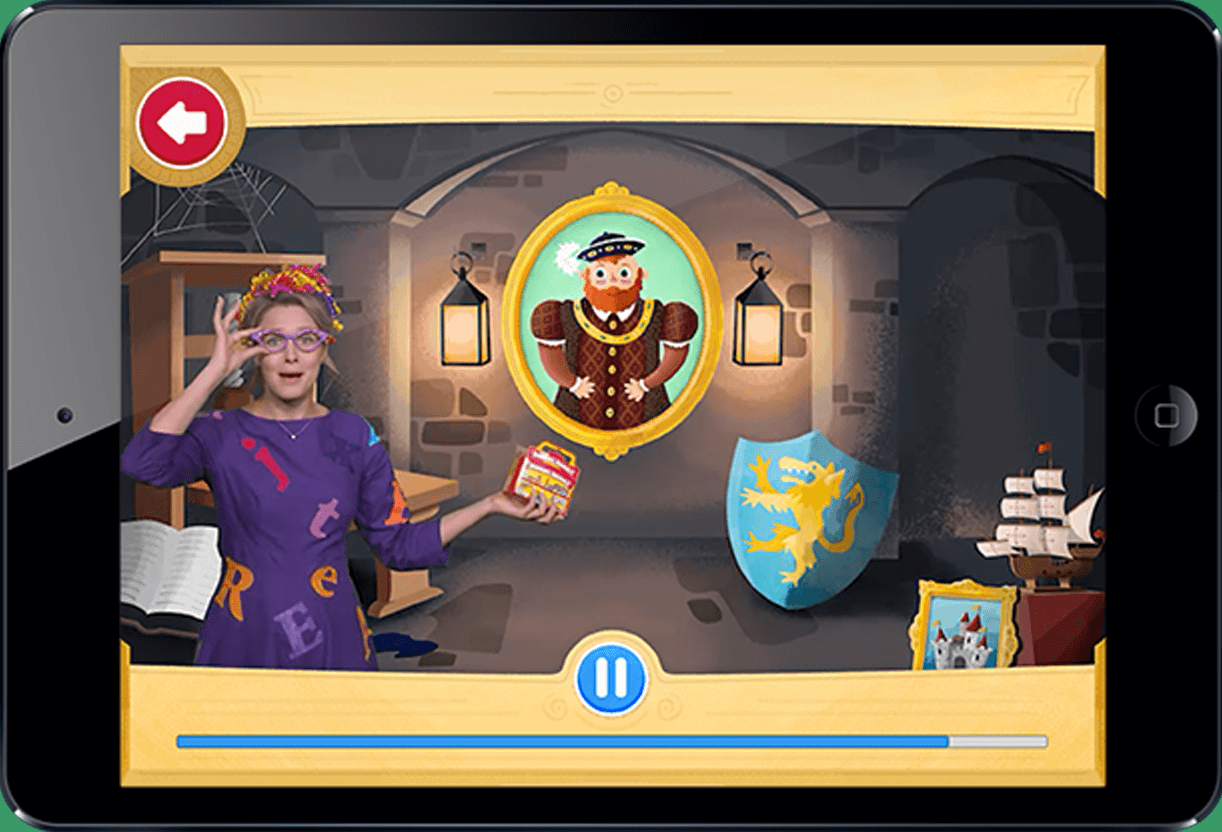For the past six months or so my son Clayton has been using the Phoncis Museum app to learn to read, and I figured it was time to give in a review. So here goes:
Bottom line: Phonics Museum taught my five-year-old to read.
Considering that’s exactly what I wanted, I am super pleased.
Even better, he was able to work independently and complete his “lessons” with little assistance. A huge perk when one of my goals was to give him something educational and productive to do while I was working on other things.
So let’s get into the nitty gritty.
What is The Phonics Museum?
The Phonics Museum is smart phone / tablet app that teaches students to read through a combination of teaching videos (with both animation and live-action instruction) and phonics games.
What makes the app great is that it didn’t start as an app. It started as a proven reading curriculum that was loved and enjoyed by thousands. So when they created the app, all the rich pedagogical knowledge and experience was already there.
The Phonics Museum is divided into ten levels, and children start out learning to distinguish letter sounds. Within days of starting the program, my son started noticing what words started with c, f, or d – something he’d never picked up on before. Here's an example of him thinking about what letter different words start with:
By the tenth level, children are reading short vowel words and are familiar with five consonant diagraphs.
PROS of Phonics Museum
Here’s some of the things we loved about the Phonics Museum
- My son enjoyed doing his “lessons” each day, and the simple “rewards” of virtual stars, trophies, and getting to the next floor of the museum were a fun motivator. He also enjoyed the songs and characters (often talking about Miss Biddle and Percival).
- The lessons and games clearly taught phonics concepts in a way that kids easily understand and are able to implement.
- Students are also introduced to culture and works of art.
- Kids can do most of the lessons independently.
- It actually taught my son to read – and fairly quickly, too.
CONS of Phonics Museum
The only negative I found was that the books kids are supposed to try to read always seemed about two steps too advanced.
Somewhere around level five or six, kids attempt to read their first book, but at this point they haven’t had enough practice putting words together to be very good at it. As a result, it took us about ten minutes to read the first sentence. Considering the book had about twelve pages, it was WAY too long to be realistic, so we just stopped after the first page or two.
This pattern continued, and for each book (which he definitely DID need my help to read), we got through the first page or two (three if we were lucky) before he ran out of stamina.
Interestingly, now that he’s finished the whole program, we just went back and read book #1 and it was super easy for him to read. So the problem isn’t the books themselves but the fact that they’re not quite ready for the books at the time they are given to them.
My suggestion to Phonics Museum (if they’re listening) – add a lot more, much shorter, books or reading exercises along the way and save the longer books for the end, helping students build up their reading stamina and experience success along the way.
That said, the program is still absolutely amazing and the fact that he didn’t actually finish reading the books never slowed him down. We just grabbed a few Bob Books from Amazon so he could experience more reading success earlier.
Try the Phonics Museum
I definitely recommend the Phonics Museum and believe it is well worth the (small) investment - both for parents and teachers.
If you are a parent of a preschooler, this is a great way to help them master letter sounds and start putting words together.
If you’re a teacher, this program would be a fantastic supplement to your reading program. And because most of the activities can be done without adult assistance, students could work through the program at school, at home, or both.




Very informative and engaging article. Thanks for the tips. EdTech tools are the way to go in the burgeoning Age of Information Technology. These tools create a new and evolved breed of children who grow up with the use of technology in their education process. They are fast-learners whose learning process are filled with attractive graphics and enthusing interactive apps that make their childhood colorful. But their use of these tools have to be accompanied by their parents or other well-meaning adults lest they withdraw within themselves
This is a great advice for us! Very honest and practical. I really enjoyed this post
Linda,
Your website is AMAZING! Thank you for putting these resources together with your clean, concise organizational abilities. I look forward to learning and reaching my students with this very helpful content.